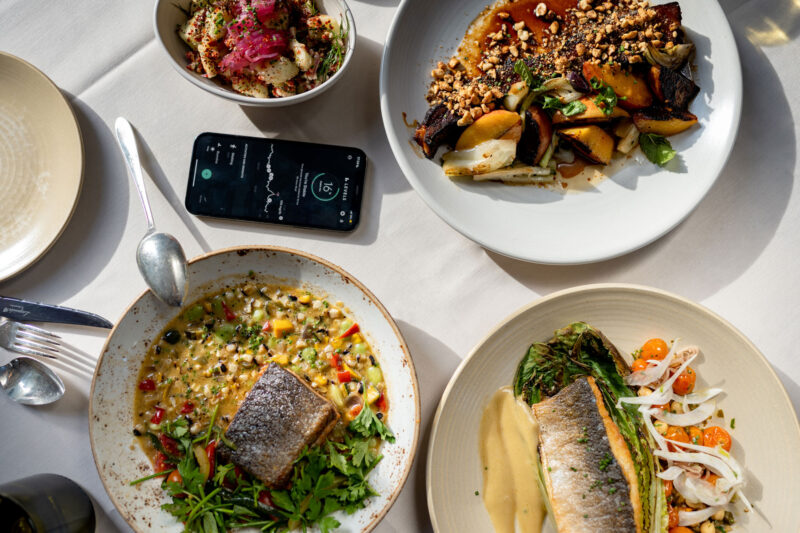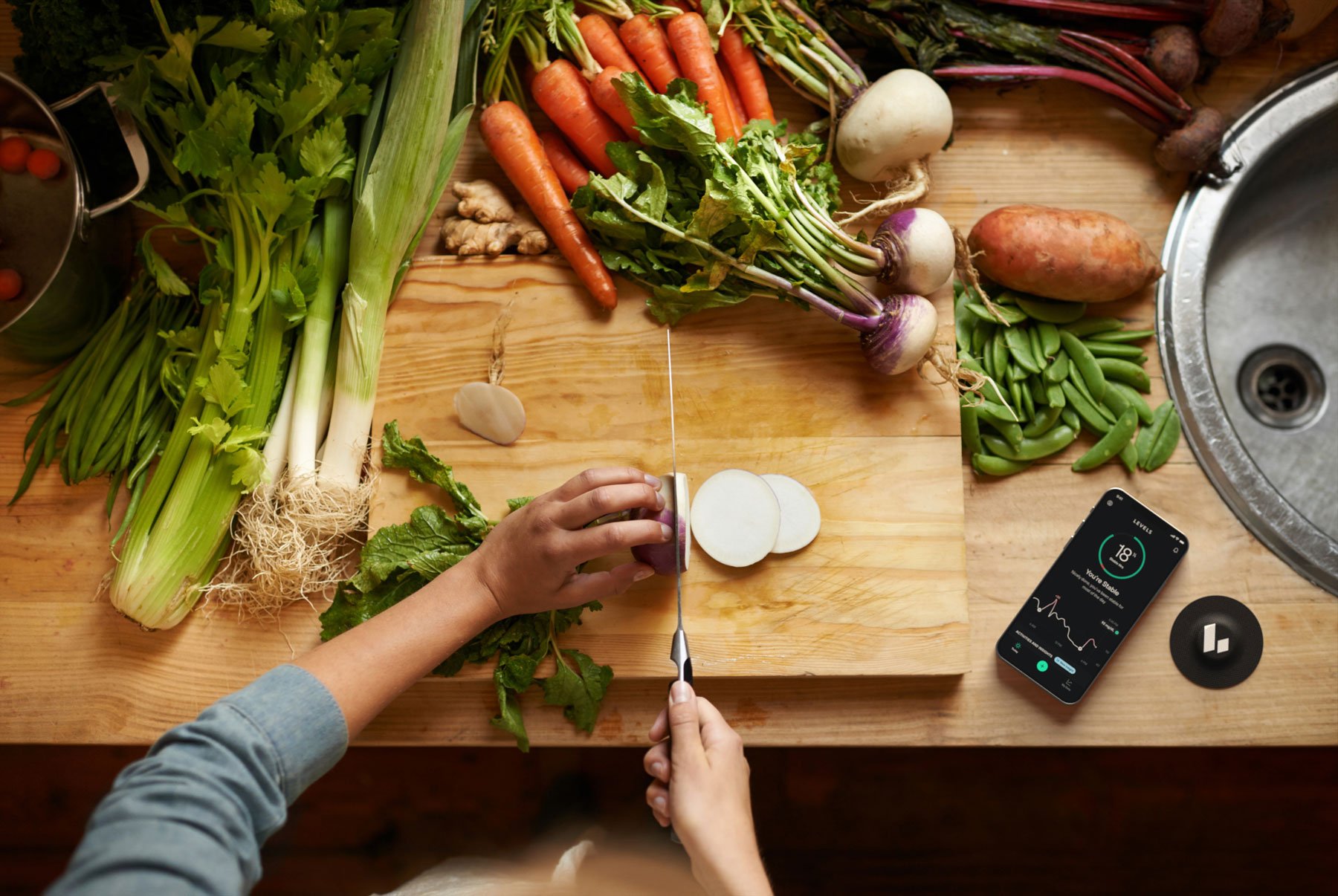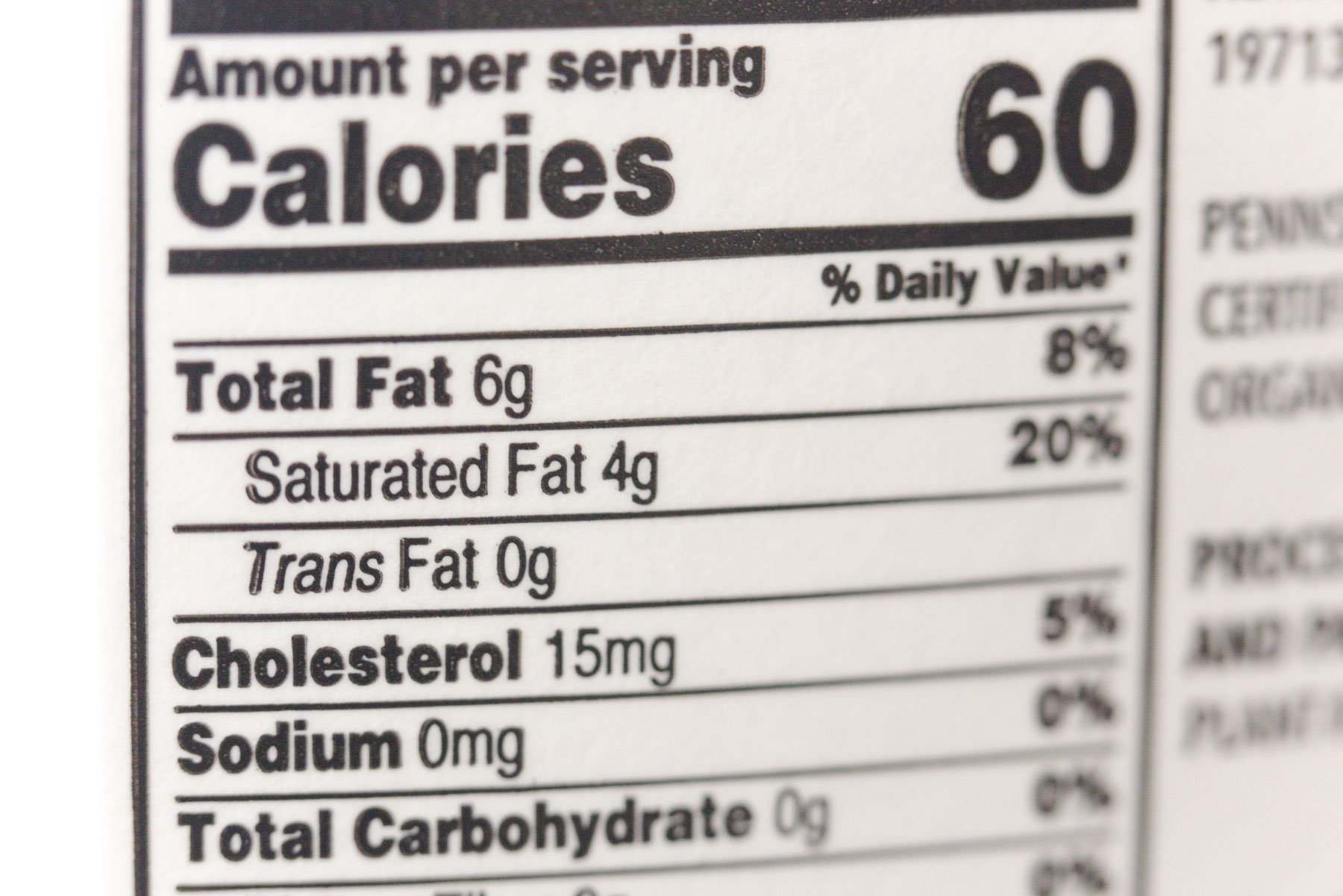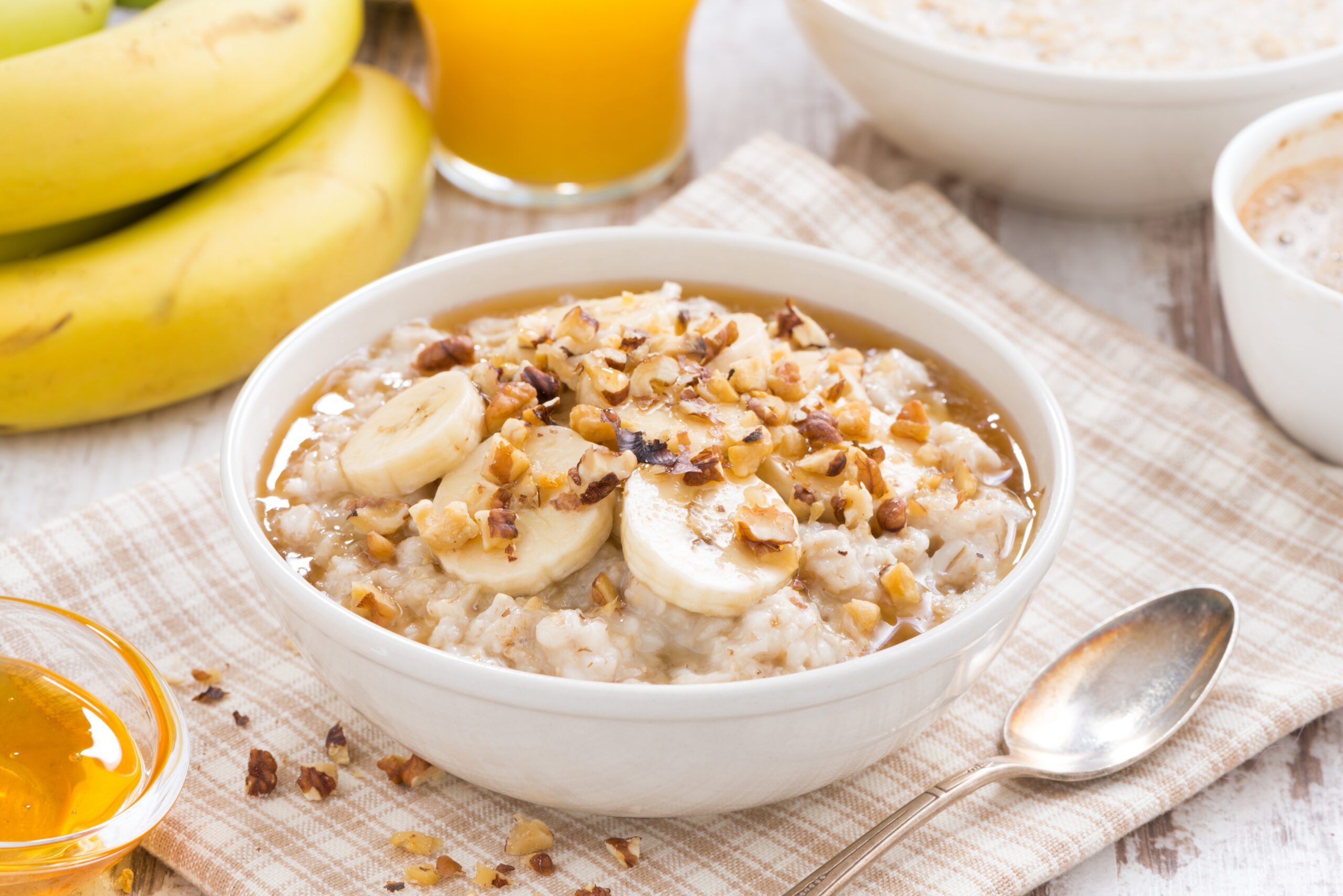If you’re trying to optimize your metabolic health, you may already pay close attention to the glycemic profile of each food choice. But what you eat isn’t all that matters—how you eat your meals may be important, too. Research suggests that the order in which you consume macronutrients (carbohydrates, fats, and proteins) can significantly impact blood sugar levels.
Food sequencing is a relatively new field of research, and the few existing studies tend to have a small number of participants. Still, evidence of how the body processes macronutrients supports the hypothesis that eating carbs last might benefit metabolic health. In what follows, we’ll explore some of that background evidence and early findings on the impact of food order.
Clues that Food Order Matters
“Naked” Carbs Are a Problem
When you eat food, your gut breaks it down into a simple sugar called glucose, which your cells rely on for fuel. The body converts any calorie source (including fat and protein) into glucose, but carbohydrates undergo this transformation most readily. That’s why simple carbs (e.g., table sugar, corn syrup, refined grains, and starchy vegetables) cause a rapid rise in glucose.
It’s long been understood that pairing carbohydrates with other nutrients can blunt this blood sugar spike. In the early 1980s, diabetes researchers found that adding fat (specifically several tablespoons of butter) to a high-glycemic potato meal lowered the post-meal blood sugar spike by roughly 15 percent. In the subsequent decades, independent researchers confirmed this finding many times. A 2014 study, for example, compared a meal of plain white rice to white rice plus groundnut oil and found that the added oil reduced participants’ peak blood sugar levels by nearly 14 percent.
Combining protein with carbs yields an even more powerful effect. In one study, adding protein to a sugary beverage reduced blood glucose response by 23 percent among men with Type 2 diabetes. Similarly, a 2010 study found that adding 30 grams of protein to a sugary beverage blunted the glucose response by roughly 50 percent—an effect that held whether the participants were metabolically healthy or had advanced insulin resistance. And a 2006 study of men without diabetes found that adding protein to a sweetened beverage reduced their glucose response by 32 percent. The study authors also simultaneously tested fat and concluded that protein is three times more effective, gram for gram, in reducing post-meal blood sugar.
Fiber can also help reduce your glycemic response to other carbohydrates. In a 2010 study, participants sprinkled 5 grams of fiber over various everyday foods, such as bread, rice, granola, and yogurt. The added fiber reduced their blood sugar response to these foods by 12 to 45 percent. A 2009 study found that a mashed potato meal containing 4% added fiber resulted in a nearly 55% lower glycemic response than standard mashed potatoes. And in a 2019 study, people who ate rice with bean sprouts (which were chosen for their fiber content) had a nearly 8% lower glucose response than people who ate rice alone.
Additionally, research suggests combining fat, protein, and fiber delivers more significant benefits than any of those nutrients alone. For instance, in the 2019 study cited above, a combination of fiber (sprouts), fat (oil), and protein (egg) lowered blood sugar significantly more than any one ingredient. In a similar 2014 study, the combination of white rice with fiber (bok choy), fat (oil), and protein (chicken) yielded a significantly lower blood sugar response than white rice combined with any individual ingredient.
In short: if your goal is to prevent blood sugar spikes, the evidence suggests that you should avoid eating carbs “naked”—that is, without nutrients like fiber, fat, and protein to help dampen your glycemic response.
How your body processes foods—together
Research points to several biological mechanisms behind the benefits of “dressing” your carbs with other macronutrients, and some of these mechanisms may be at play in the case of food sequencing.
First, complementing carbs with other nutrients appears to affect the rate at which your stomach empties its contents into your intestines (so-called “gastric emptying”). If your stomach quickly dumps digested food into your intestines, the nutrients (including glucose) enter your bloodstream all at once. Conversely, if your stomach retains and processes its contents longer, the sugar wave surges more slowly. Indeed, your gastric emptying rate accounts for about 35% of the variance in your glycemic response, so anything that slows it down can offer significant benefits.
This is the primary means by which fat reduces post-meal blood sugar. Fats are slow-digesting, requiring your liver to produce compounds called bile acids. (Unlike carbohydrates, which are broken down by readily-available enzymes in your mouth and stomach.) To buy extra time for this process, your small intestines send chemical signals to your stomach that reduce gastric emptying, effectively pumping the brakes on digestion.
Like fat, protein significantly slows gastric emptying. It also triggers a cascade of hormonal effects that can improve your blood sugar control. For example, when protein reaches your small intestines, the body ramps up the secretion of the hormones GIP and GLP-1, which in turn prompt an increase in insulin. Simultaneously, protein reduces the rate at which your liver clears insulin from your bloodstream, allowing it to stay active longer. This increased insulin action enables your tissues to more quickly and efficiently uptake glucose from your bloodstream.
Additionally, including dietary fiber in a meal creates a thicker, more viscous slurry in your stomach. Compared to stomach contents that lack fiber, this partially-digested mix enters your intestines more slowly and takes longer to break down, slowing the rate at which glucose enters your bloodstream. Fiber also binds to your digestive enzymes, which can impede the breakdown of carbohydrates in your gut. Fiber’s interaction with your intestines may also help them develop a thicker mucosal layer, slowing the passage of nutrients into your bloodstream and reducing your post-meal glycemic levels.
Finally, eating other nutrients may help you reduce your carb consumption. Protein and fat are both known to stimulate GLP-1, which tends to increase your sense of fullness and lessen your desire for food. Naturally, eating fewer carbs could reduce your post-meal blood glucose consumption. This effect could also be responsible for weight loss among people with prediabetes who may adopt a carbs-last meal sequence strategy.
Related article:
Current Evidence on the Impact of Food Sequence
Some research indicates that, in addition to strategically pairing food, strategically sequencing food might yield metabolic benefits. This approach assumes the hypothesis that consuming protein, fat, or fiber before carbs could cause an even lower blood glucose spike than ingesting those nutrients simultaneously. And while research in this area remains preliminary, it generally confirms this hypothesis.
In a 2010 study, 15 people with Type 2 diabetes ate vegetables and white rice dishes. When participants consumed the vegetable plate first, their peak blood glucose was over 20% lower than when they ate rice first. Additionally, the vegetables-first sequence lowered their blood insulin levels by more than 30% at the 30- and 60-minute mark. The study authors conclude that a “veggies before carbs” strategy could help control blood sugar among people with diabetes. Importantly, subsequent research (which we’ll explore next) replicated these findings among metabolically healthy people.
In a 2019 study, 16 healthy Chinese adults were served a series of meals that included meat, vegetables, and white rice (chosen to resemble a “typical Asian meal”). The highest blood sugar levels were seen when people ate rice first, followed by other dishes. Blood sugar was significantly lower when people ate all three dishes together. And the lowest blood sugar levels followed a sequence of vegetables first, then meat, then rice. In other words, leading with vegetables (i.e., fiber) and saving carbs for last seemed to blunt the carbs’ glycemic impact even more than simply pairing carbs with other nutrients. This study was noteworthy because it directly tested these strategies against each other and identified a clear winner. The study also found that consuming protein first yielded significant blood sugar reductions—but this approach led to significantly higher insulin levels than a vegetables-first strategy.
A small 2018 study reached similar conclusions. Participants consumed a plate of carbs (including rice, braised pumpkin, and an orange) as well as a vegetable plate and a meat plate. When they ate carbs first, participants experienced the highest cumulative glucose over the following two hours and the highest peaks of glucose and insulin at 30 minutes. When they ate carbs last, those numbers were at their lowest. And when carbs were the middle dish (after veggies but before meat), the numbers were in the middle.
Some researchers suggest that food sequencing blunts blood sugar spikes via some of the mechanisms described above—specifically, slowing gastric emptying and enhancing GLP-1 secretion. In a 2016 study, researchers found that consuming protein (either fish or beef) before white rice more than halved the rate of gastric emptying compared to consuming rice first. They also found that levels of GLP-1—a hormone that stimulates insulin secretion—were significantly higher when people consumed protein first. Interestingly, this did not correlate with higher insulin levels, leading the study authors to speculate that another unidentified property of GLP-1 may help control blood sugar. The study determined that these two factors—slower gastric emptying and an enhanced GLP-1 response—were vital to reducing post-meal blood sugar.
Similarly, in the 2019 study described above, researchers found that a vegetable-meat-rice meal sequence raised GLP-1 levels without increasing insulin levels. In fact, it reduced total cumulative insulin by more than 24% compared to a rice-first meal. This is important because elevated insulin carries its own health risks. The researchers conclude that though they can’t conclusively identify the mechanism by which food sequencing affects blood sugar levels, they speculate that gastric emptying (which they didn’t track in their study) could be at work.
What About “Preloading”?
Like food sequencing, preloading is a strategy to reduce your post-meal blood sugar by strategically ordering your macronutrients. However, this approach has a much longer break between servings. Typically, you eat a “preload” serving of fat, protein, or fiber 30 minutes before a major meal, though the gap can be as little as 15 minutes or as much as two hours.
There is considerable evidence that preloading does reduce the glycemic response. A 2016 study of eight healthy people found that a preload of 40 grams of soy protein consumed 30 minutes before a sugary beverage significantly reduced peak and cumulative blood glucose. Insulin levels were also considerably higher (cumulatively and at peak levels) when participants consumed the protein preload. Researchers concluded that slower gastric emptying and an enhanced insulin response were responsible for the reduction of blood sugar.
In a 2015 study, participants consumed a mixed preload of fat and protein (consisting of a boiled egg and parmesan cheese) 30 minutes before drinking a sugary beverage. All participants experienced a significant blood sugar reduction due to the preload, and the size of the effect depended on their metabolic health. People with Type 2 diabetes saw the greatest benefit (a 49% lower glucose spike), while people with prediabetes experienced a more moderate 37% glucose peak reduction, and people with normal glucose tolerance saw a 32% reduction. As in the previous study, researchers concluded that the glycemic benefits of preloading are due to both delayed glucose absorption and enhanced insulin response.
Related article:
Research indicates that fiber preloads can also reduce post-meal blood glucose. In a 2018 study, healthy women consumed a beverage enriched with corn fiber two hours before eating a pizza meal. The fiber preload significantly reduced participants’ glycemic response. In the words of the study authors, fiber kept blood glucose “virtually flat” for two hours after eating.
Although preloading is a demonstrably effective glucose-reduction strategy, there are ongoing questions about its practicality and long-term health impact. Researchers have noted that adding a significant preload to each meal could increase a person’s total energy consumption, possibly causing weight gain. And while some studies have found no evidence of weight gain, there is a relative dearth of long-term research evidence. Finally, many preloading studies (including those summarized above) have found that the strategy can increase overall insulin levels; and chronically elevated insulin has been linked with obesity, inflammation, cancer, and Type 2 diabetes. If your goal is to avoid insulin spikes, preloading may not be ideal.
For these reasons, some investigators are studying food-sequencing strategies as an alternative. A “carbs last” approach may be more practical than preloading (in that it requires less behavioral change) and less likely to cause unintentional weight gain. Early evidence also suggests that it doesn’t elevate your insulin levels, though further research is required.
The Bottom Line
Mixing carbs with other nutrients (such as fat, protein, and fiber) can help you blunt post-meal blood sugar spikes. In addition, the evidence suggests that it may be even more effective to sequence your meals with fiber first, then protein, and finally, carbs. Preloading may also be a viable strategy, but it may be more challenging to integrate into your lifestyle, and there are open questions about how it will affect your weight and daily insulin levels.










